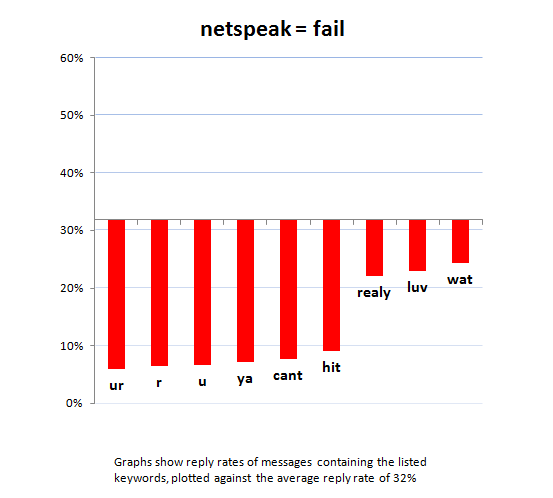
When four math majors launched OkCupid in March 2004, they had a fundamental belief that data would be how the dating site would differentiate the company in the crowded online dating market.
“People think that people turn online for dating because they need someone to find their soul mate for them, but we think it’s because you want a bigger pool of people to choose from,” said Sam Yagan, CEO of OkCupid, who also founded TheSpark.com, maker of SparkNotes, a brand of educational study aids. “Data is key to sorting through all of these people.”
Unlike sites dating services like Match.com, OKCupid is free, relying instead on an advertising model. This helps give it a younger demographic for its 7 million users. When a user signs up, he or she is asked to think of some questions to ask a potential mate. Questions range from interests, to hobbies and lifestyle choices. On average, an OkCupid user answers about 250 different questions, giving the dating site an enormous amount of data and, therefore, insights into people’s preferences.
Using the survey answers, messaging habits, autobiographies on people’s profiles, and other data from OkCupid’s members, the dating site has been able to uncover certain trends and behaviors in online dating and about society in general. The OkCupid team has found that people’s traits and characteristics affect the types of interactions they are having with potential suitors. So, for example, race affects the messages users get, and the likelihood a woman has difficulty achieving an orgasm has to do with her age.
Based on the findings, OkCupid created OkTrends in 2009, a blog with original research and insights from OkCupid. The company compiled its observations and statistics from hundreds of millions of OkCupid user interactions, all to explore the data side of the online dating world. The blog actually helped OkCupid increase its users, with the blog improving the dating site’s organic search ranking, per Yagan. The company actually brought a data scientist on board in 2009, and he overlooks the blog, mining through all of the data and reporting on the findings there.
This data focus had obvious marketing benefits. Unlike most corporate blogs that resemble ghost towns, the OKTrends is vibrant, with posts regularly receiving over 200 comments. The blog was being mentioned in the press a lot and got well over 2 million users just a year after it launched. All this was done without an advertising budget. OkCupid saw all this data crunching as an opportunity to make money, too.
A campaign for rum brand DonQ created a landing page where consumers could analyze the types of pick-up lines that people rely on. The brand did some social media outreach to drive fans to this page. Don Q got tons of insights into what people like and don’t like in terms of their first interaction with a potential suitor and was able to create another campaign based on that.

Other advertiser campaigns on OkCupid have shown that targeting by marital status is undervalued. Yagan said he is perplexed by this because marital status really has a lot to do with how much people spend and what they spend on. If you think about what you spent your money on before you got married and then what you spend on now that you are married, you’ll see a big difference, he said.
“Getting married and having kids are the most life-changing events in a person’s life and really do signal purchase intent,” Yagan said.
A lot of the data that OkCupid has comes right from its users’ profile pages. Advertisers can target people by keywords on their own profiles. OkCupid did some work with a top 25 Internet Retailer. The retailer had many data sources. But for this particular effort, it looked at keywords on the profiles of OkCupid users. Specifically, the retailer analyzed the keywords that users used to describe themselves. Through this, the retailer (who was targeting females 24-45) was able to paint a picture of this target woman’s life. It found that her preferences differ by age. Another finding was that what is happening to a woman in her dating life plays out in other parts of their life. Through this effort, the retailer realized that its target of 24-45-year-old women was too broad and needed to be narrowed to an older group.
“Through this data, the retailer was able to paint a picture of the slightly older, retail shopper and what is important to her,” Yagan said. “We learned that share of wallet changes based on age. We also learned that the type of cell phone that a consumer uses says a lot about them as well.”

Using data to inform marketing isn’t anything new. Mint.com is another example of a brand that mines internal data for use of creative marketing. LinkedIn does the same for its advertisers. It uses internal data to help advertisers like Citigroup, for example, find the right target audience. As marketers become better at mining the data and then navigating through what’s important and what’s not, we’ll see more relevant ads, better results and bigger digital marketing budgets.
For OkCupid, the payoff was big. IAC’s Match.com, the 800-pound gorilla in online dating, scooped up the site last year, paying $50 million plus earnouts.
More in Marketing

Why the New York Times is forging connections with gamers as it diversifies its audience
The New York Times is not becoming a gaming company. But as it continues to diversify its editorial offerings for the digital era, the Times has embraced puzzle gamers as one of its core captive audiences, and it is taking ample advantage of its advantageous positioning in the space in 2024.

Why B2B marketers are advertising more like consumer brands to break through a crowded marketplace
Today’s marketing landscape is more fragmented than ever. Like consumer brands, business brands are looking to stand out in a crowded and competitive marketplace, making marketing tactics like streaming ads, influencers and humorous spots more appealing.

As draft puts WNBA in spotlight, the NBA is speeding up ballplayers’ transition to creators
The NBA’s star athletes are its greatest marketing asset.





